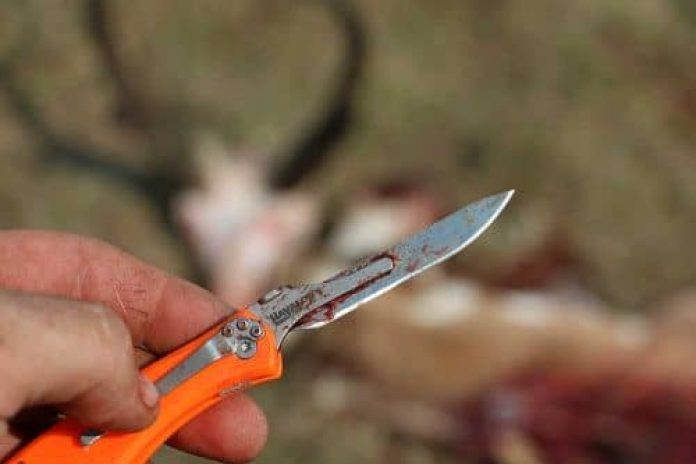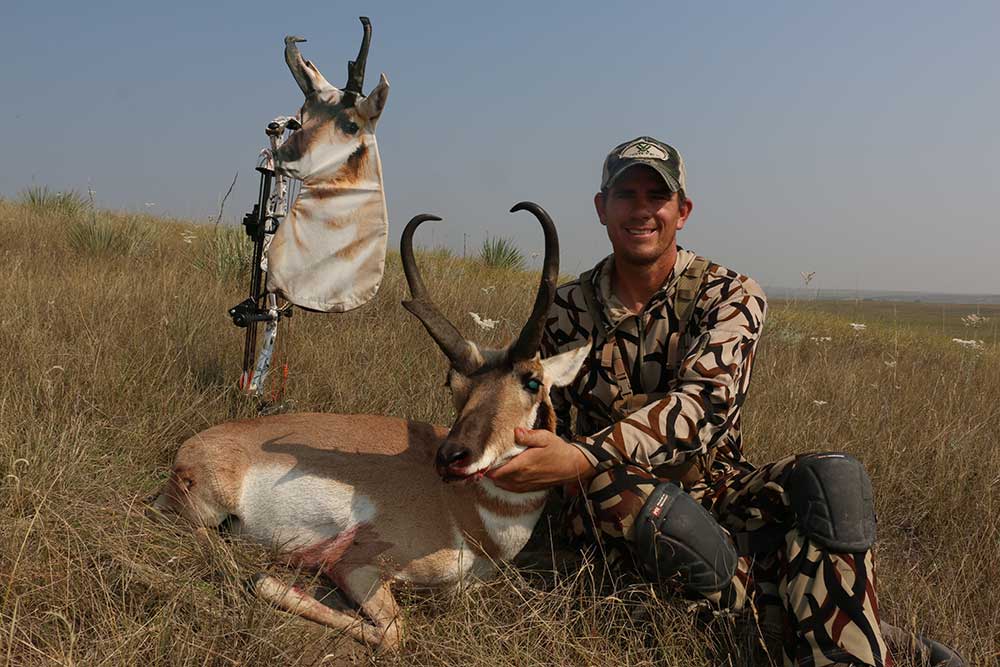
I had the grill going since 8:00 that morning roasting some pork quarters and ribs. At about 5:30 p.m. I slipped in some antelope loin. Long story short, we said grace and dug in. Everyone came back looking for more antelope but it was gone after the first round.
I cannot count the number of times I have heard people say, “antelope tastes terrible and I wouldn’t eat it again.” I would venture to guess these same people have never had antelope meat that was properly prepared. Proper meat care is vital with all game animals, but especially important with the extreme heat often accompanying antelope season.
“Heat is one of the biggest enemies of great tasting meat.”
The worst thing you can do after taking an antelope and gutting it is to load it in your truck and drive off while the goat soaks up the hot temperatures. I have a friend who shot a bison in early January one year with high temperatures in the mid-teens. They gutted it, loaded it on their trailer, and headed home with no concerns. It was about a 10-hour drive home, so they arrived late and just went to sleep. The next morning they started skinning and butchering but immediately realized they made a big mistake. They ended up losing one of the front shoulders and part of the other because the meat wasn’t cool enough. If spoiled meat can happen in the cold of January it can happen even faster in the heat of August when most archery antelope seasons start.
So what is the best way to get the meat cooled quickly? In my opinion, you must get the animal broken down and get the meat off as soon as possible. I use the gutless method to accomplish this. This is basically removing the hide to expose the meat and then removing the meat from the carcass. In most of the areas I hunt it’s legal to take care of the animal this way. However, be sure to check your local regulations. Most areas that allow this require proof of sex along with the meat. There are some areas that don’t allow leaving anything besides a gut pile and require taking out the rest of the animal. In these areas it best to get the critter back to the truck as soon as possible. Then get the hide off and the meat into a cooler with ice.
GUTLESS METHOD-
There are a few ways to employ the gutless method but I will explain my preference. I start with the antelope lying on one side and make a cut following the spine from tail to ears. If I am saving the cape for taxidermy purposes, I don’t cut all the way to the ears. It is a good idea to check with your taxidermist to learn how they like the cape prepared. Once you have that cut made you peel the hide off the top side from the spine to the belly exposing the meat. Once this is done there are basically 2 ways to continue. First, take the front and back legs off leaving the bone in. When doing this take the rear leg off at the hip joint and the front leg will separate along the ribs.
DEBONING METHOD-
The second method involves deboning the meat and leaving the bones in the field. I always use the second method for a couple of reasons. First, your pack will be lighter on the way out. Second, you don’t have the extra bones to worry about when it’s time to butcher the antelope. When deboning I basically follow the muscle seams and remove the meat according to those groups. Once the leg meat is removed you can take the back strap, inside loin and any other meat scraps, including the neck and rib meat. The next step is to roll the animal over and repeat the process.
Once the meat is removed and packed I make a beeline for the truck, which has a cooler and ice waiting. Once at the truck, the meat filled game bags are hurried into the ice filled cooler to cool as quickly as possible.
Now, if you’re in an area that prohibits leaving any animal parts behind except the gut pile then you have 2 options. The first is to get the antelope whole, minus the intestines, back to the truck as soon as possible. A game cart can be a great tool to utilize in a situation like this. Once there, if you don’t have quick access to a meat locker or butcher, I would get the hide peeled and the meat off the carcass and into the cooler as quick as possible. The second option is to use the gutless method and then drag the carcass out with you.
There are plenty of tutorials online to learn more about the gutless method. There are a few extra items I bring along in my pack when using this method that I call my “kill kit.” The contents are some rubber gloves, a short length of paracord, game bags, and a sharp knife. For game bags I use B.O.M.B. bags made by Pristine Ventures. I prefer a Havalon knife as well. With its replaceable blades I never worry about having a sharp knife. Remember, you must get your meat cooled as quickly as possible and I guarantee you will end up with better table fare. I hope you have some success this season and try out some of these methods.















